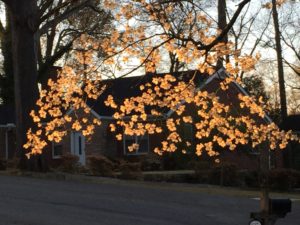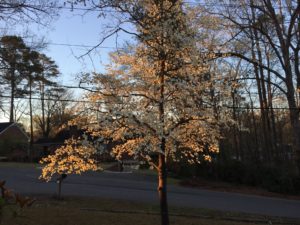Three things recently came together that got me thinking. I just finished reading Hillbilly Elegy by J.D. Vance, a memoir of his growing up in a decaying Rust Belt community in Ohio, and his family of transplanted folk from Eastern Kentucky. The book had been mentioned in a Washington Post article about Donald Trump supporters, and for some reason I was intrigued enough to buy it and read it. (I highly recommend this book, by the way.)
The second thing that got me thinking was an article someone posted on Facebook last Thursday, about Ruby Bridges. You may not know her name, but you’ve seen her picture. And if not the iconic photograph, then surely the painting by Norman Rockwell. In the picture, she is the little African American girl who, on November 14, 1960, began attending a segregated white elementary school in New Orleans. The day she entered the school, escorted by federal marshals, many white parents pulled their children out, and, shamefully, most teachers refused to teach her. Her presence there was so unwelcome that she had to be escorted by the marshals for most of the rest of the school year.
The third thing: Last Thursday, the same day I saw the article about Ruby Bridges, my aunt and I went to the South Carolina State Fair here in Columbia. I’m not much interested in the rides and so forth, but love to see the displays of art by local artists, the baking and handicrafts, visit the livestock barns and meet farmers from around the state, drop in on performances by school groups, and so forth. This time, there was a group of kids from a local school—maybe third or fourth grade—performing patriotic music. When we came into the tent where they were performing, they were singing America the Beautiful (with props of wheat, ocean waves, and so forth), and then a medley of the songs of the five branches of the US military.
It was a group of enthusiastic and talented kids, representing a diverse array of backgrounds, and their performance brought a tear to my eye as I watched. Such a positive vision of our country at its best. I thought about Ruby Bridges, and about the fact that, until 1964, she and this group of little kids would not have been allowed onto the fairgrounds, much less to perform. Until 1964, the SC State Fair had been for whites only, with perhaps a day or two on which African American residents were allowed in. An integrated group of children would have been extremely controversial. And yet, here they were, kids whose backgrounds, to all appearances, hailed from every continent, singing songs of love of country and the unity of our citizenry. I felt really inspired.
As my aunt and I wandered around the poultry barn, we struck up a conversation with a young woman and her father. The young woman was in her dress uniform, and she said she had just graduated from basic training at Fort Jackson. She and her dad, who had traveled from Georgia to celebrate with her, were both obviously very proud of her accomplishment. She said she came from Champaign-Urbana, just a hundred miles from where I went to high school, so we talked about those roots for a little while. The conversation lasted only a few minutes, but I felt honored that they had shared their happiness with us.
J.D. Vance, the author of Hillbilly Elegy, talked about how becoming a Marine had been a significant step in his journey to a life as a successful Yale-educated lawyer. He said his training and service taught him that he had the ability to take on the most demanding challenges in life, a message that had not been part of his growing up. I thought about how many of the kids in the high-poverty schools I work with choose military service after high school, and seem to find the same things. The GI Bill may be one of the initial reasons that these young people choose military service, but I would guess that they gain something much more valuable in the process—the sense that anything is possible, and that they can do whatever they set their minds to. I think it’s no accident that the shared experience of American servicemen and women during World War II, of saving the world from fascism in the 1940’s, translated into the movement for social justice and integration in the 1950’s and 60’s. I wish I had understood this when I was younger.



